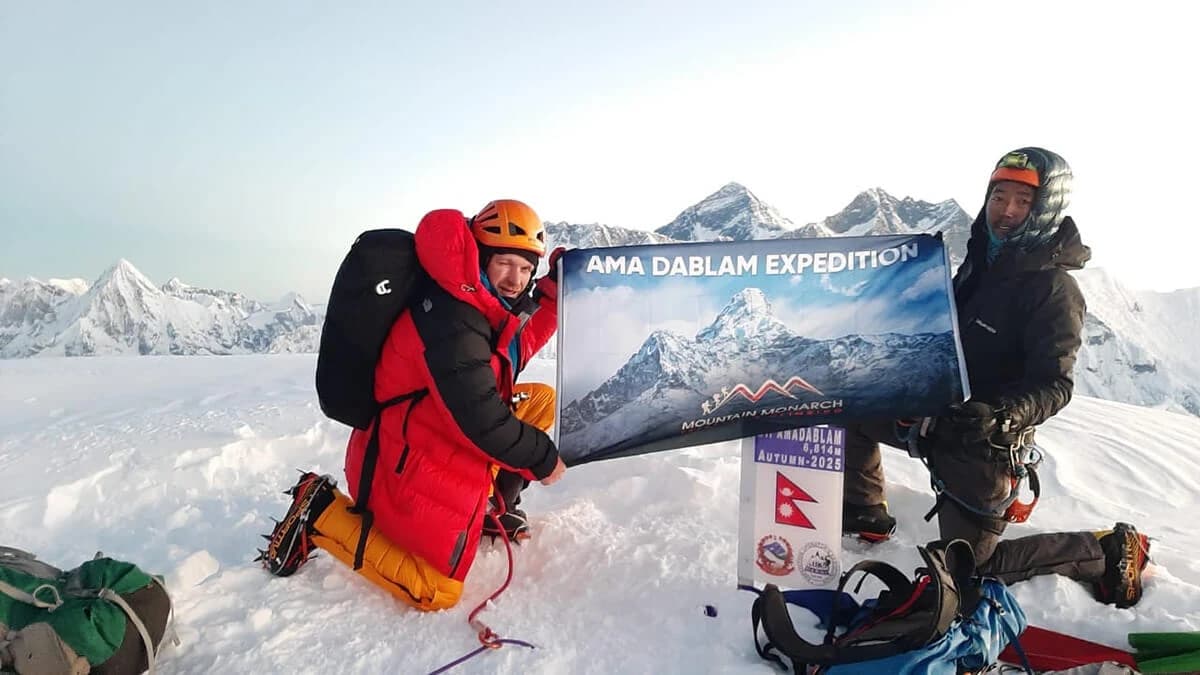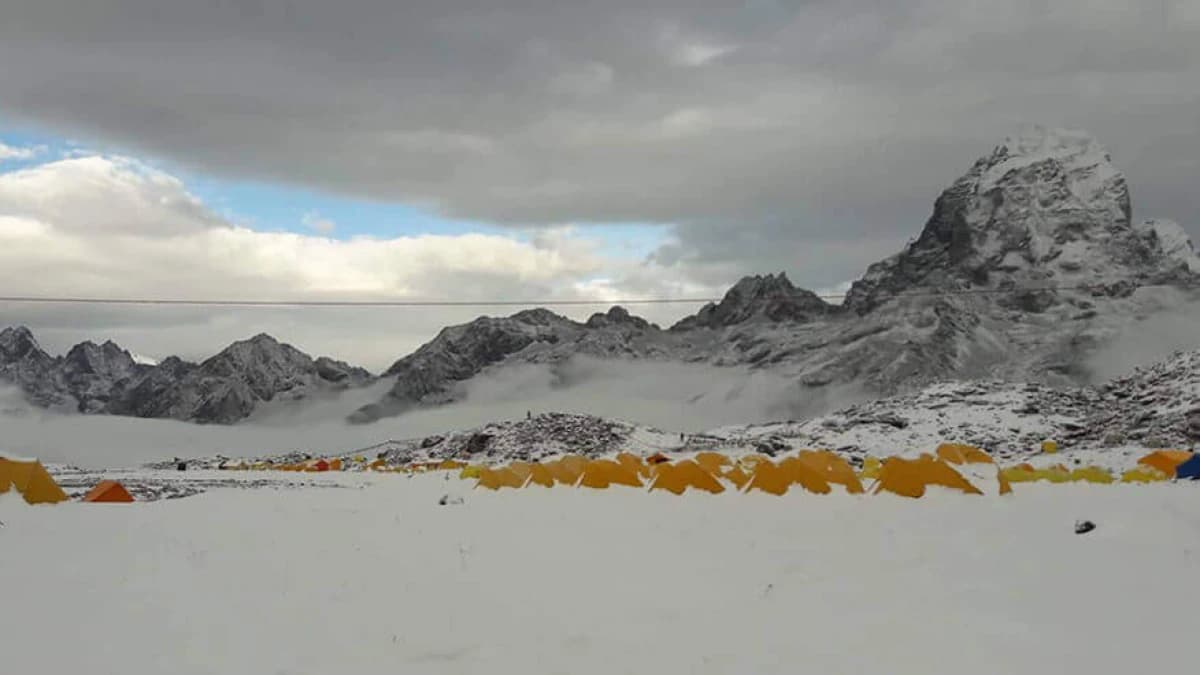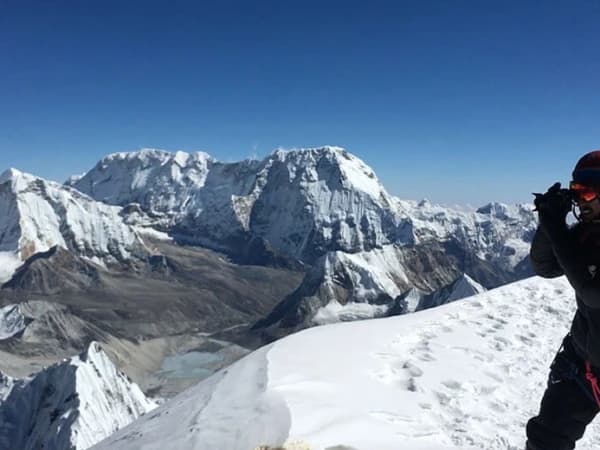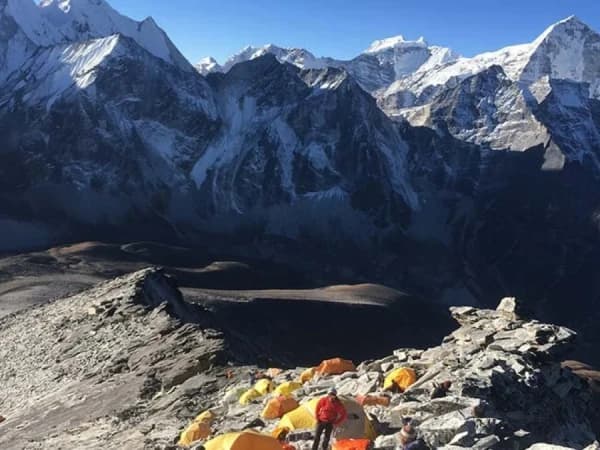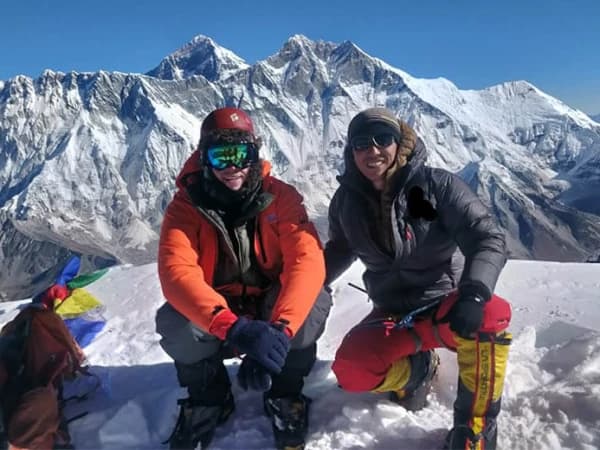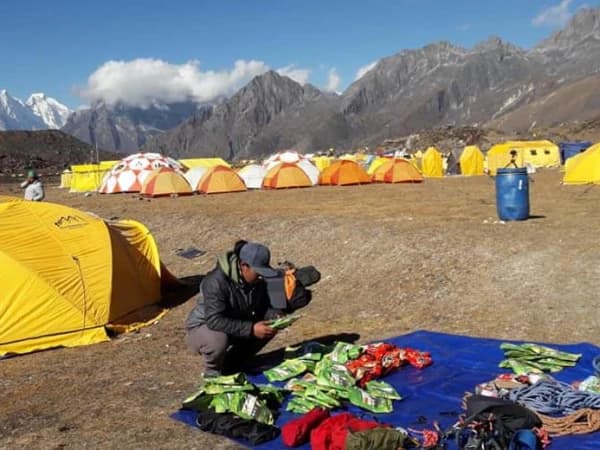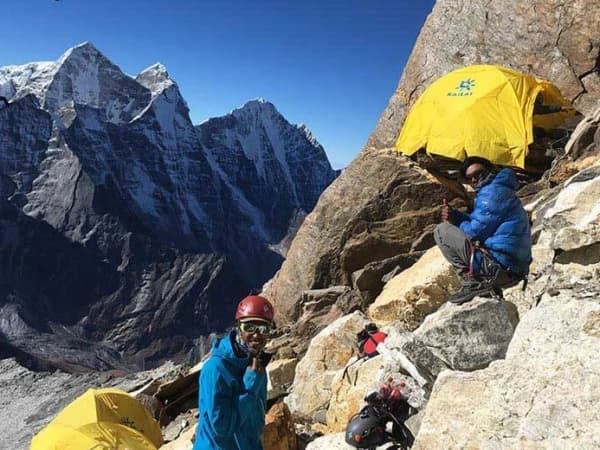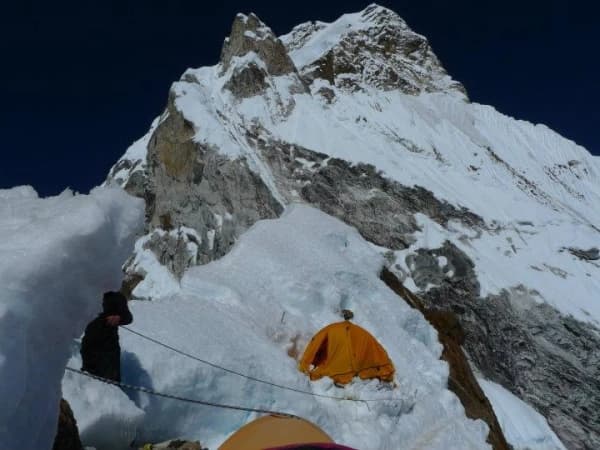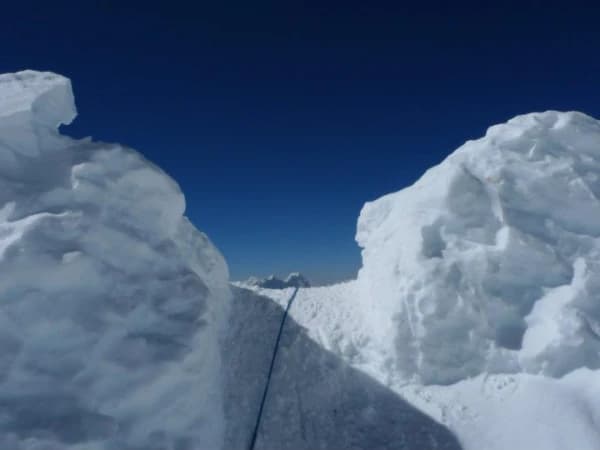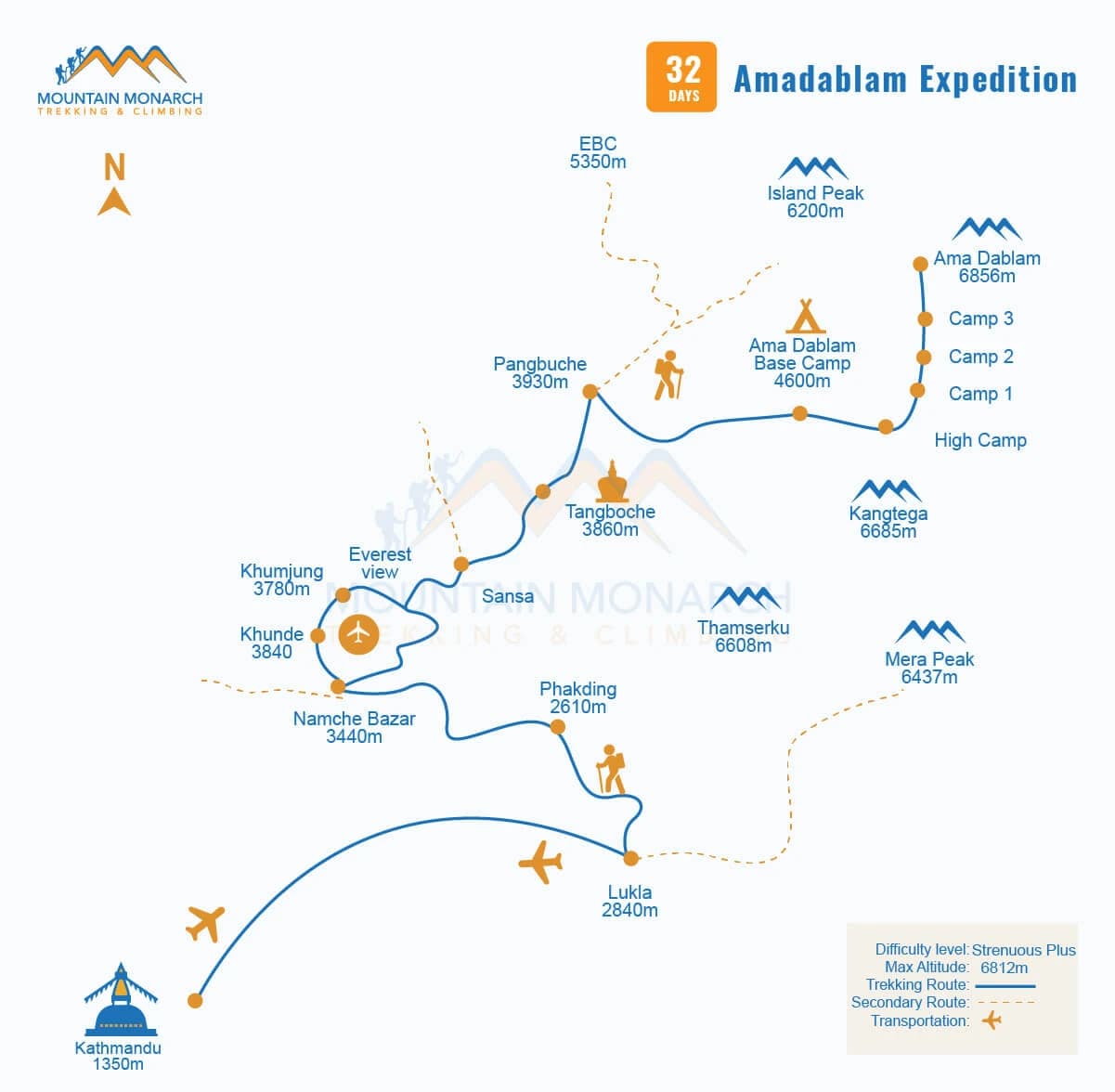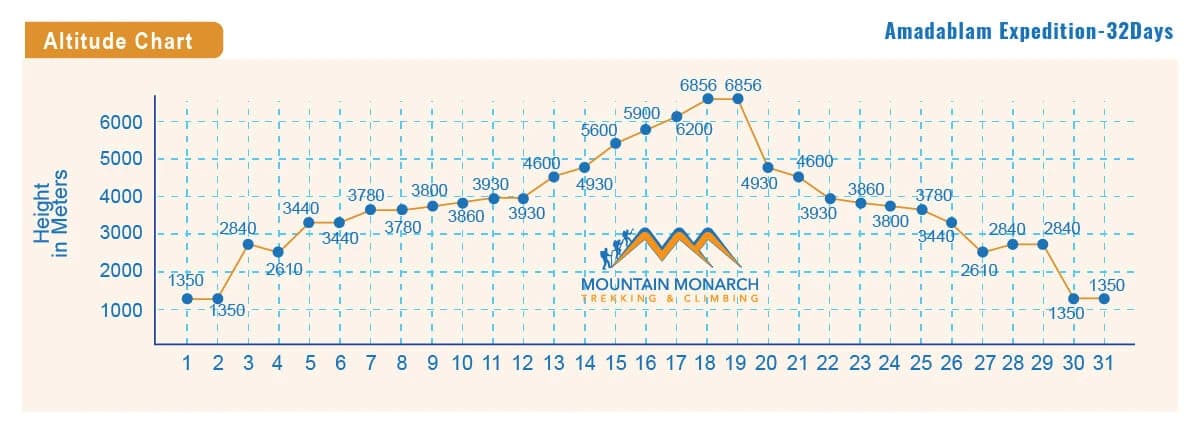Trip Overview
The Ama Dablam Expedition is almost 20 km south of the tallest mountain in the world, Mount Everest (8,848.86 m) above sea level. In the eastern Himalayas of Nepal, Ama Dablam Peak Climbing is a world-class technical climbing experience best done with advanced rock and ice climbing skills. Standing tall at 6,812 m above sea level, Ama Dablam is a unique, ice-pyramid-like, sharp-pointed snowy peak, one of the most visually striking peaks in the Himalayas.
Also known as the “Matterhorn of the Himalaya in Nepal,” showcasing significant resemblance to the Swiss mountain Matterhorn, despite potential snowy, icy, and rocky sections, Ama Dablam in the iconic Khumbu Valley is climbable. While the overall Ama Dablam climb may not be for beginners, for someone seeking the extra thrill of a slightly more technical summit push, Mera Peak Climbing, Island Peak Climbing, and Lobuche East Peak Climbing are dream summits.
Our Ama Dablam Expedition itinerary of 31 days emphasizes your safety, well-being, and satisfaction. This route includes a separate acclimatization day in Namche Bazaar and Dingboche, as well as a contingency day during the Ama Dablam summit push, to ensure that you are well acclimatized to high altitude and do not experience symptoms of acute mountain sickness (AMS). This itinerary also maximizes the chances of reaching the top. Or, while the 31-day Ama Dablam Climbing itinerary is a standard one, further customize it at Mountain Monarch.
Let us know your preferences, requirements, and budget plan so we can craft you the best Himalayan voyage that is full of unforgettable memories, an unmatchable sense of adventure, and one that meets your niche. Also, get group and early bird booking discounts on the Ama Dablam Expedition Cost, including for 2025 and 2026. Anticipate the sheer beauty of at least four of the world’s most iconic mountain landscapes in one single trip.
What can you expect during a trip to Ama Dablam?
The Ama Dablam expedition is both a challenging and rewarding Himalayan journey that begins with a flight into Lukla and involves a multi-day trek through the Khumbu Valley, culminating in the ascent of Ama Dablam Peak at 6,812 m above sea level. Daily, you will hike 5-7 hours or more, determined by individuals physical fitness levels, walking pace, and route conditions at the moment. The region’s abundant culture and natural highlights make up for everything.
Passing through green valleys, rhododendron forests, and Sherpa dwellings, you will not be able to help but appreciate the grandeur of nature and stunning mountain landscapes. The prayer flags, ancient monasteries, and marvelous mountain views of Everest, Lhotse, and Makalu significantly enhance the spiritual and cultural aspects of the Ama Dablam Peak Climbing experience. Here’s what makes it an unforgettable Himalayan adventure:
Can you see Mount Everest on the way to climb Ama Dablam?
Yes, as you pave your way through Lukla and follow the classic Everest Base Trekking route that stops passing by tiny yet scenic mountain villages like Namche Bazaar, Tengboche, and Pangboche, you will be able to see the varying yet beautiful scenery, all while dominated by majestic snow-capped mountain ranges, including Mount Everest, the tallest mountain on the earth itself.
While the suspension bridges over deep gorges, Mani walls, prayer flags, lush forests, and rivers are other visual highlights, the expansive views of sky-towering mountain peaks, especially from high-altitude Everest landmarks like Kala Patthar (approx. 5,545 m), Everest Base Camp (5,364 m), and the top of Ama Dablam (6,812 m), almost 7,000 m, grant you an adrenaline-rushing 360-degree mountain view mixed with serenity like never before.
Through the Sagarmatha National Park, one of the UNESCO World Heritage Sites in Nepal, you will be treated to outstanding panoramic views of several Himalayan giants in addition to Mount Everest and Ama Dablam itself, and there are Lhotse, Makalu, Cho Oyu, and Nuptse. The Khumbu glaciers and icefall, along with glacial rivers, mean the dramatic mountain scenery is at every turn.
Which are the main Sherpa villages en route to the Ama Dablam climb?
All at the center of the Everest Trekking Region, watched over by mythical Mount Everest and surrounding Himalayan peaks, Namche Bazaar, Tengboche, and Pangboche specifically are the main Sherpa villages lying along the trekking and climbing trail to Ama Dablam. Nearby these villages lie some of the high-altitude peaks to take an early morning hike and return to the village to take a rest and spend the night, perfect for proper acclimatization.
Additionally, each of these villages features ancient monasteries representing the testament of the region’s unparalleled resilience to high altitude. Some of the villages and their monasteries, such as Tengboche, host the largest festival, called Mani Rimdu, celebrated with masked dance, music, rituals, and rites. The insight into the Sherpa life, traditions, and spirituality here is immense; hence, these are the main villages you will encounter during the climbing journey to Ama Dablam.
Is Ama Dablam Southwest Ridge the safest climbing route?
Among several Ama Dablam climbing routes, the southwest ridge is by far considered the most popular and practical one, with a balanced amount of rocky, icy, and snowy sections. In comparison to other climbing trails, the southwest ridge has minimal high-altitude risks of avalanches, ensuring you a safer yet thrilling ascent with thrilling exposure to technical intricacies that embody the spirit of adventure.
During the Ama Dablam Expedition, as you pursue the southwest ridge and get closer to the majestic summit, the sense of adventure intensifies, as does the Himalayan weather, which is generally known for colder temperatures and unpredictability. Our Ama Dablam Expedition itinerary of 31 days is designed so that you are well prepared for the challenges. Allocating hikes or optional trekking peak climbs, we make sure you are well acclimatized and have built the skills required for successful ascent to 6,812 m, almost 7,000 m.
Explore Sagarmatha National Park, the natural wonder of the Himalayas!
One of the natural UNESCO World Heritage Sites in Nepal since 1979, before you begin climbing Ama Dablam, you will trek through the Sagarmatha National Park for several days. Spread over an area of 1,178 square kilometers, home to the highest mountain on the planet, Mount Everest (Sagarmatha/Chomolungma), the national park is known for diverse ecosystems, flora, fauna, and glacial landscapes.
Characterized by dense forests of rhododendron, pine, and oak, gradually transitioning to alpine meadows and barren lands in the upper Himalayas, often covered in snow. On a very lucky day, you may come across a Himalayan black bear, red panda, Himalayan tahr, musk deer, Himalayan marmot, and pika, and if extremely fortunate, a snow leopard at high altitude, precisely on the way to Everest Base Camp and Ama Dablam Peak itself.
Inhabited by several ethnic communities, the national park serves as a gateway to the top trekking destinations in the world, including the Everest Three High Passes Trek and the Gokyo Lakes Trek, other as the traditional Everest Base Camp Trek. Intertwined with the rich cultural heritage of the Sherpa people, showcasing close cultural ties to Tibetan Buddhism, the Sagarmatha National Park is hence a paradise for all, including mountaineers, trekkers, and nature lovers.
How is the Ama Dablam climbing route and summit day? Set a record with the ultimate push to the top of Ama Dablam!
The Ama Dablam Summit Day, after several days of trekking through the less-traveled route in the Everest Himalayas, begins from Camp 2. While the mountain guide leads climbs following the southwest ridge to the peak, trekkers and climbers must be prepared for both mentally and physically taxing sections. Beginning at predawn, the Ama Dablam final summit climbing route includes deep crevasses and some technical twists. For those who dare to challenge, it is a voyage to cherish for a lifetime.
Gradually taking you in between Grey Tower, rocky ridges, and finally to the top of Ama Dablam at an altitude of 6,812 m above sea level, the breathtaking perspective of several Himalayan giants such as Lhotse, Makalu, and Cho Oyu, including the majestic roof of the world, Mount Everest, makes everything rewarding. The push, pull, remote trails, and limited infrastructure that many find difficult to cope with come to a glorious climax with a boastful, successful Ama Dablam ascent.
The lofty adventure of ascending Ama Dablam Peak from Base Camp, Camp I (5,700 m), Camp II (6,000 m), and Camp III (6,300 m), against the mind-blowing Imja Valley, Khumbu Glaciers, and snow-capped mountain ranges, is unparalleled. Thus, the climb has the potential to be something beyond just an ascent. Meaningful impressions are forged, camaraderie comes naturally, and the Ama Dablam Expedition is recorded as an unforgettable Himalayan odyssey against the sky-high Himalayan giants.
Ama Dablam Expedition in 2026 | 2027: Climbing Route and Cost
After completing the trekking phase that typically begins from Lukla and goes through the traditional villages of the Everest Trekking Region like Namche Bazaar, Tengboche, and Dingboche, the challenging real Ama Dablam Climb starts from Base Camp. This 31-day Ama Dablam Peak Climbing itinerary makes sure you are well acclimatized and trained for the upcoming expedition days that begin once you arrive at Ama Dablam Base Camp or Base Camp I.
Our 31-day itinerary to climb Ama Dablam successfully includes allocating an entire rest day in Namche Bazaar and Dingboche, followed by a training session in Base Camp so you are skilled in basic climbing skills essential to make it safely and sound to the peak. Often involving boulder fields, rocky slabs, cairns, and gullies to reach camp with a significant influence of Himalayan weather, making it to the top tests your endurance level, stamina, and mental resilience.
The situation may intensify with your closeness to the peak, but it is beneficial to tone oneself before approaching higher peaks. At Mountain Monarch, we provide an international level of quality at affordable prices. The Ama Dablam Expedition cost, including for 2026 and 2027, is reasonable. We strive to make sure climbers and trekkers are safe and have an enjoyable experience, and build up confidence with our training and professional climbers.
For an immediate response in case of emergency, authentic cultural encounters, and reliable support in need of carrying oxygen cylinders, sleeping bags, and first aid kits, and also the provision of quality climbing equipment and gear, contact us now. Our Ama Dablam climbing cost includes meals, accommodation, permits, transportation, and all other necessary logistics such as camping and mountain guides, all major elements of a successful and satisfying climbing experience in Nepal. Reserve your seat now!
Climb Ama Dablam Peak in autumn 2026 and 2027, Booking open now!
Among the four seasons of spring, summer, autumn, and winter in Nepal, spring and autumn, from March to May and September to November, offer an excellent Himalayan climate, clear skies, and unobstructed views. Taking as peak high-altitude trekking and climbing seasons, including for Everest Three High Passes Treks, Annapurna Circuit Trek, and even Mount Everest Expedition and Mount Manaslu Expedition, we offer fixed departures.
We have set fixed departure dates for March to May and October and November in 2026 and 2027. Feel free to join our group when the trekking and climbing routes are known for their best and safest conditions. Led by well-experienced professionals consisting of skilled mountaineers, climbing guides, and adventurers, we put your safety and success as the utmost priority. A veteran or a beginner with good mental and physical conditioning, we make Ama Dablam possible for you.
Stay in touch with us, get ready to push yourself beyond limits, and set out on an unparalleled experience amidst the breathtaking grandeur of the Himalayas. Join us for an adventure of a lifetime and make your mark on one of the world's most beautiful peaks, Ama Dablam.

